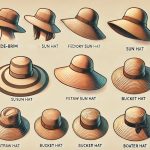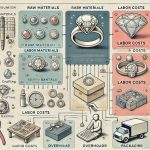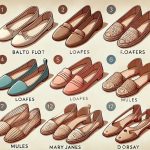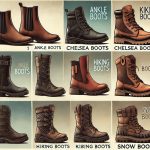Water bottles, whether made from plastic, glass, or metal, are ubiquitous in modern life. The production of these bottles is a complex process that involves multiple stages, from raw material extraction to the final packaging. This page will detail the key steps involved in the manufacturing of plastic water bottles, which are the most commonly used type worldwide.
Raw Material Sourcing
The production of plastic water bottles begins with the extraction of raw materials. The primary material used in these bottles is polyethylene terephthalate (PET), a type of plastic that is both lightweight and durable. PET is derived from crude oil and natural gas, which are refined into ethylene glycol and terephthalic acid, the two key components of PET.
Extraction and Refinement of Raw Materials
The first step in the production process is the extraction of crude oil and natural gas, which are then transported to refineries. At the refinery, these raw materials undergo a series of chemical processes to produce ethylene glycol and terephthalic acid. These substances are then combined in a polymerization process to form PET pellets, which serve as the raw material for bottle production.
Manufacturing of Preforms
After the PET pellets are produced, they are shipped to bottling facilities, where they are heated and molded into preforms. A preform is a small, test-tube-shaped piece of plastic that will later be blown into the shape of a bottle.
Injection Molding
Injection molding is the technique used to create preforms. The PET pellets are heated to a high temperature until they melt into a liquid. This liquid is then injected into a mold that is shaped like the desired preform. Once the mold is filled, it is cooled quickly to solidify the plastic, forming the preform. This stage is critical as it determines the quality and consistency of the final product.
Quality Control
Throughout the injection molding process, quality control measures are in place to ensure that the preforms meet specific standards. These measures include checking the weight, dimensions, and clarity of the preforms. Any defective preforms are recycled back into the production process, reducing waste and ensuring efficiency.
Blow Molding of Bottles
Once the preforms are created, they are sent to the blow molding stage, where they are transformed into the final bottle shape.
Stretch Blow Molding
In the stretch blow molding process, preforms are first heated to a temperature that makes them malleable but not molten. They are then placed into a bottle-shaped mold. High-pressure air is blown into the preform, which causes it to expand and take the shape of the mold. The stretching and blowing process gives the bottle its final shape and structural strength.
Two-Step vs. Single-Step Process
There are two main methods for blow molding: the two-step and the single-step process. In the two-step process, preforms are manufactured in one location and then shipped to another facility for blow molding. In contrast, the single-step process combines both injection molding and blow molding in one continuous operation, which can be more efficient and reduce transportation costs.
Labeling and Packaging
After the bottles are molded, they undergo labeling and packaging processes before being filled with water and distributed to consumers.
Labeling Techniques
There are various labeling techniques used in the industry, including pressure-sensitive labels, shrink sleeves, and direct printing. Each method has its own advantages in terms of cost, durability, and design flexibility. Pressure-sensitive labels are often used for their ease of application and high-quality appearance, while shrink sleeves can cover the entire surface of the bottle, allowing for 360-degree design possibilities.
Automated Labeling Systems
Automated labeling systems are commonly used in large-scale production facilities to ensure speed and precision. These systems can apply labels to hundreds of bottles per minute, reducing labor costs and increasing efficiency. After labeling, the bottles are inspected to ensure that the labels are correctly aligned and free of defects.
Filling and Sealing
Once the bottles are labeled, they are filled with water and sealed. The filling process must be conducted in a clean and controlled environment to prevent contamination.
Filling Machines
Filling machines are used to dispense water into the bottles. These machines are highly automated and can fill thousands of bottles per hour. The water used in these bottles is typically filtered and purified to meet health and safety standards. After filling, the bottles are sealed with caps, which are often made from a different type of plastic such as high-density polyethylene (HDPE).
Quality Assurance
During the filling and sealing process, quality assurance measures are in place to ensure that each bottle is filled to the correct level and that the caps are securely fastened. Bottles that do not meet the required standards are removed from the production line and either recycled or discarded.
Final Packaging and Distribution
The final step in the water bottle production process is packaging and distribution.
Packaging Options
Bottles are typically packaged in bulk for distribution. Common packaging options include shrink-wrapping the bottles in plastic or placing them in cardboard boxes. The choice of packaging depends on factors such as cost, environmental considerations, and customer preferences.
Distribution Network
Once packaged, the bottles are transported to distribution centers, from where they are sent to retailers and eventually to consumers. The distribution network is a critical part of the production process, ensuring that bottles reach their destination in a timely and efficient manner.
Production Cost Distribution
The production cost of water bottles includes raw materials, manufacturing processes, labor, transportation, and packaging. The cost distribution typically breaks down as follows:
- Raw Materials (40-50%): The primary component cost, varying with the type of material used (plastic, stainless steel, glass, etc.).
- Manufacturing (20-30%): Includes machinery, factory overheads, and labor.
- Packaging (10-15%): Involves the design, materials, and labeling of packaging.
- Transportation (5-10%): Covers shipping from the manufacturing site to the distribution points.
- Other Costs (5-10%): Includes marketing, taxes, and miscellaneous expenses.
Types of Water Bottles

Plastic Water Bottles
Overview
Plastic water bottles are the most common type due to their lightweight, affordability, and durability. They are available in both reusable and single-use forms. Reusable plastic water bottles are typically made from materials like PET (polyethylene terephthalate), HDPE (high-density polyethylene), or BPA-free plastics.
Popular Brands
| Brand | Established | Location |
|---|---|---|
| Nalgene | 1949 | Rochester, USA |
| CamelBak | 1989 | Petaluma, USA |
| Contigo | 2009 | Chicago, USA |
| Thermos | 1904 | Norwich, UK |
| Brita | 1966 | Oakland, USA |
Averaged Retail Price on Amazon
- $10 – $20
Market Popularity
Plastic water bottles are extremely popular due to their cost-effectiveness and convenience. They are widely used by people of all age groups, from children to adults.
Production Details
- White Label Production Cost in China: $0.50 – $2.00 per unit
- Product Weight: 100 – 200 grams
- Minimum Order Quantity: 1,000 units
- Major Materials: PET, HDPE, BPA-free plastics
Stainless Steel Water Bottles
Overview
Stainless steel water bottles are known for their durability, temperature retention, and eco-friendliness. They are often insulated, making them suitable for both hot and cold beverages.
Popular Brands
| Brand | Established | Location |
|---|---|---|
| S’well | 2010 | New York, USA |
| Hydro Flask | 2009 | Bend, USA |
| YETI | 2006 | Austin, USA |
| Klean Kanteen | 2004 | Chico, USA |
| ThermoFlask | 2007 | Redondo Beach, USA |
Averaged Retail Price on Amazon
- $25 – $40
Market Popularity
Stainless steel water bottles have gained immense popularity due to their sustainability and ability to keep beverages at the desired temperature for extended periods.
Production Details
- White Label Production Cost in China: $4.00 – $8.00 per unit
- Product Weight: 300 – 500 grams
- Minimum Order Quantity: 500 units
- Major Materials: Stainless steel, silicone, plastic
Glass Water Bottles
Overview
Glass water bottles offer a pure drinking experience as they are free from chemicals and do not retain flavors. They are eco-friendly and often come with protective silicone sleeves.
Popular Brands
| Brand | Established | Location |
|---|---|---|
| Lifefactory | 2007 | Sausalito, USA |
| Soma | 2012 | San Francisco, USA |
| Takeya | 1961 | Huntington Beach, USA |
| Ello | 2009 | Chicago, USA |
| Zulu | 2015 | New York, USA |
Averaged Retail Price on Amazon
- $15 – $30
Market Popularity
Glass water bottles are favored by health-conscious consumers who prefer a clean, non-toxic drinking experience. They are popular despite being more fragile than other types.
Production Details
- White Label Production Cost in China: $3.00 – $5.00 per unit
- Product Weight: 400 – 600 grams
- Minimum Order Quantity: 1,000 units
- Major Materials: Borosilicate glass, silicone, plastic
Collapsible Water Bottles
Overview
Collapsible water bottles are designed for convenience and portability. They can be folded or rolled up when empty, making them ideal for travel and outdoor activities.
Popular Brands
| Brand | Established | Location |
|---|---|---|
| Vapur | 2009 | California, USA |
| Hydaway | 2015 | Bend, USA |
| Nomader | 2015 | California, USA |
| Baiji Bottle | 2015 | Salt Lake City, USA |
| Platypus | 1998 | Seattle, USA |
Averaged Retail Price on Amazon
- $10 – $25
Market Popularity
Collapsible water bottles are popular among travelers, hikers, and outdoor enthusiasts due to their space-saving design and lightweight.
Production Details
- White Label Production Cost in China: $1.50 – $3.00 per unit
- Product Weight: 50 – 150 grams
- Minimum Order Quantity: 2,000 units
- Major Materials: Silicone, BPA-free plastic
Infuser Water Bottles
Overview
Infuser water bottles come with a built-in infuser compartment to hold fruits, herbs, or tea. They allow users to add natural flavors to their water, promoting healthy hydration.
Popular Brands
| Brand | Established | Location |
|---|---|---|
| Bevgo | 2013 | Florida, USA |
| AquaFrut | 2015 | California, USA |
| Sharpro | 2014 | New York, USA |
| Live Infinitely | 2014 | Florida, USA |
| Brimma | 2016 | California, USA |
Averaged Retail Price on Amazon
- $15 – $25
Market Popularity
Infuser water bottles are gaining popularity among health enthusiasts who enjoy flavored water without artificial additives.
Production Details
- White Label Production Cost in China: $2.00 – $4.00 per unit
- Product Weight: 200 – 300 grams
- Minimum Order Quantity: 1,000 units
- Major Materials: BPA-free plastic, silicone
Filtered Water Bottles
Overview
Filtered water bottles have built-in filters that remove impurities and contaminants from tap water, making them ideal for travelers and outdoor enthusiasts.
Popular Brands
| Brand | Established | Location |
|---|---|---|
| Brita | 1966 | Oakland, USA |
| LifeStraw | 2005 | Lausanne, Switzerland |
| GRAYL | 2013 | Seattle, USA |
| Sawyer | 1984 | Safety Harbor, USA |
| Katadyn | 1928 | Zurich, Switzerland |
Averaged Retail Price on Amazon
- $20 – $50
Market Popularity
Filtered water bottles are popular among adventurers and individuals concerned with water quality, especially in areas with uncertain water sources.
Production Details
- White Label Production Cost in China: $5.00 – $10.00 per unit
- Product Weight: 250 – 400 grams
- Minimum Order Quantity: 500 units
- Major Materials: BPA-free plastic, activated carbon filters
Insulated Water Bottles
Overview
Insulated water bottles, also known as thermos bottles, are designed to maintain the temperature of beverages for extended periods. They are double-walled and vacuum-sealed to keep drinks hot or cold.
Popular Brands
| Brand | Established | Location |
|---|---|---|
| Thermos | 1904 | Norwich, UK |
| Hydro Flask | 2009 | Bend, USA |
| YETI | 2006 | Austin, USA |
| S’well | 2010 | New York, USA |
| Contigo | 2009 | Chicago, USA |
Averaged Retail Price on Amazon
- $25 – $45
Market Popularity
Insulated water bottles are popular among commuters, athletes, and outdoor enthusiasts who need their beverages to stay at the desired temperature.
Production Details
- White Label Production Cost in China: $6.00 – $12.00 per unit
- Product Weight: 350 – 600 grams
- Minimum Order Quantity: 500 units
- Major Materials: Stainless steel, silicone, plastic
Sports Water Bottles
Overview
Sports water bottles are designed for active use, featuring easy-to-use lids, ergonomic designs, and materials that can withstand impacts. They often come with features like straws or squeeze mechanisms.
Popular Brands
| Brand | Established | Location |
|---|---|---|
| Gatorade | 1965 | Chicago, USA |
| CamelBak | 1989 | Petaluma, USA |
| Under Armour | 1996 | Baltimore, USA |
| Nike | 1964 | Beaverton, USA |
| Adidas | 1949 | Herzogenaurach, Germany |
Averaged Retail Price on Amazon
- $10 – $25
Market Popularity
Sports water bottles are extremely popular among athletes and fitness enthusiasts due to their functionality and durability.
Production Details
- White Label Production Cost in China: $1.50 – $3.50 per unit
- Product Weight: 150 – 250 grams
- Minimum Order Quantity: 1,000 units
- Major Materials: BPA-free plastic, silicone
Aluminum Water Bottles
Overview
Aluminum water bottles are lightweight and often feature a protective inner lining to prevent the aluminum from reacting with the contents. They are popular for their eco-friendliness and recyclability.
Popular Brands
| Brand | Established | Location |
|---|---|---|
| Sigg | 1908 | Frauenfeld, Switzerland |
| Laken | 1912 | Alicante, Spain |
| Mizu | 2008 | Carlsbad, USA |
| EcoVessel | 2008 | Boulder, USA |
| Aladdin | 1908 | Chicago, USA |
Averaged Retail Price on Amazon
- $15 – $25
Market Popularity
Aluminum water bottles are popular among environmentally conscious consumers who value sustainability and recyclability.
Production Details
- White Label Production Cost in China: $2.50 – $4.50 per unit
- Product Weight: 200 – 300 grams
- Minimum Order Quantity: 1,000 units
- Major Materials: Aluminum, BPA-free lining, plastic
Tritan Water Bottles
Overview
Tritan water bottles are made from a durable, BPA-free plastic known for its clarity and toughness. They are often used as an alternative to glass and traditional plastics.
Popular Brands
| Brand | Established | Location |
|---|---|---|
| Nalgene | 1949 | Rochester, USA |
| CamelBak | 1989 | Petaluma, USA |
| Contigo | 2009 | Chicago, USA |
| Takeya | 1961 | Huntington Beach, USA |
| BlenderBottle | 2000 | Lehi, USA |
Averaged Retail Price on Amazon
- $10 – $20
Market Popularity
Tritan water bottles are popular due to their durability, clarity, and safety. They are often used by consumers looking for a reliable, chemical-free option.
Production Details
- White Label Production Cost in China: $1.50 – $3.00 per unit
- Product Weight: 150 – 250 grams
- Minimum Order Quantity: 1,000 units
- Major Materials: Tritan plastic, silicone, plastic








